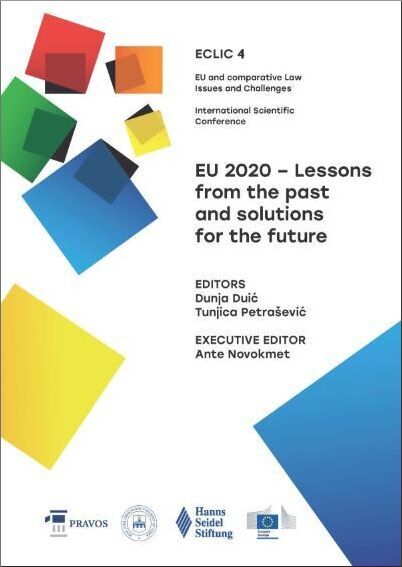EU COMPETITION LAW IN THE DIGITAL ERA
ALGORITHMIC COLLUSION AS A REGULATORY CHALLENGE
DOI:
https://doi.org/10.25234/eclic/11937Abstract
Guaranteeing fair competition has been a guiding principle of Union action since the beginnings of the European Economic Community. Anti-competitive activities in the internal market, such as agreements between undertakings, decisions by associations of undertakings and concerted practices which may affect trade between Member States and which have as their object or effect the prevention, restriction or distortion of competition, or abuse by one or more undertakings of a dominant position are prohibited as incompatible with the internal market. Over the years, a vast body of regulatory and soft law instruments, as well as the Commission’s decisions and the case law of the Court of Justice of the European Union have built up to handle a variety of complex issues associated with creating a level-playing field for undertakings in the internal market. As more and more businesses are using smart solutions, predictive analytics and algorithms for optimisation of their business processes, new business models and decision-making processes emerge. The development and use of self-learning machines, capable of intelligent behavior in the market are changing the competitive landscape and market structure, thus generating many new and complex legal issues. This paper aims to address the regulatory challenges associated with algorithmic collusion, as a form of anti-competitive behaviour among competing undertakings which is rarely manifested in explicit or even implied agreements. The issue of recognising and proving, and eventually, sanctioning tacit collusion practices becomes even more complicated when innovative digital technologies, such as implementation of price programming or self-learning algorithms enter the scene and rearrange the market structure. It is extremely difficult to differentiate between the situations in which undertakings adapt their strategies in response to the behaviour of their competitors from those where they change the interaction patterns altogether, by facilitating either conscious or unconscious parallel behaviour. Is such behaviour caught by Article 101 of the Treaty on the Functioning of the European Union? What kind of regulatory response, if any, is needed? The authors will analyse the existing practice on tacit collusions, developed in the era of ‘brick and mortar’ economy and evaluate whether a new framework is needed in the digital era. Is hard regulation suitable, or desirable at all, or could these challenges be addressed through a set of guidelines or soft law instruments? The technology is evolving faster than any legal framework. Without first knowing and understanding how algorithms work, it is impossible to develop an appropriate response to these issues. The authors offer their contribution to this on-going debate.
Downloads
Published
How to Cite
Issue
Section
License
Copyright (c) 2020 Ana Pošćić, Adrijana Martinović

This work is licensed under a Creative Commons Attribution-NonCommercial 4.0 International License.
Authors retain the copyright on the papers published in the Journal, but grant the right of first publication to the Journal. Papers accepted for publication or already published in ECLIC of the Faculty of Law in Osijek may be published by the author(s) in other publications only with proper notice of its previous publication in ECLIC.


